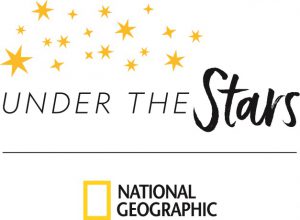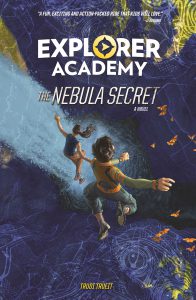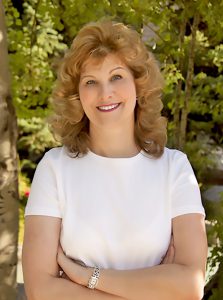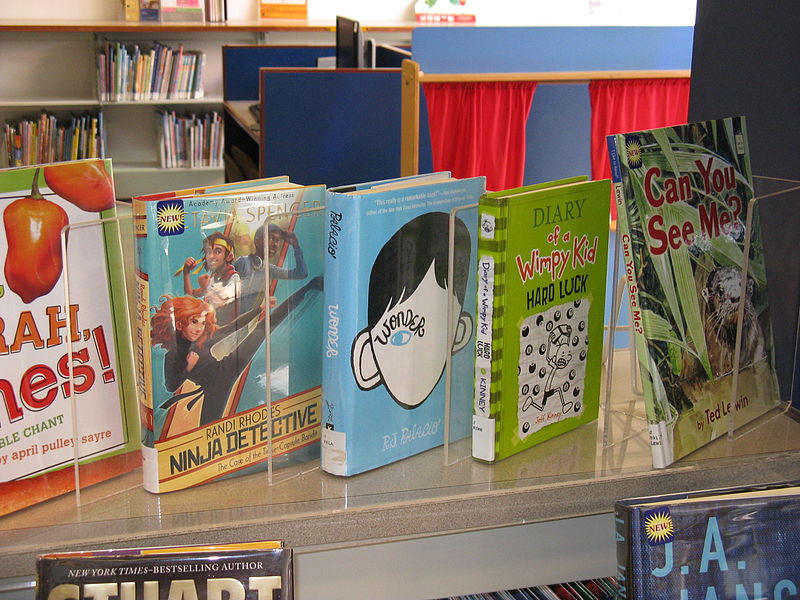National Geographic is charting new territory: a fiction book line for young readers.
The new label, Under the Stars, “will create fictional stories based on the research and adventures of National Geographic’s leading scientists, photographers and journalists,” according to a February announcement. It marks the publisher’s first children’s fiction venture in its 130-year history, and it adds to the nonfiction work already published by National Geographic Kids Books.
First up for Under the Stars: “Explorer Academy,” a futuristic seven-book series that follows the adventures of 12-year-old Cruz Coronado and his classmates at the fictional Explorer Academy in Washington, D.C.
 Cruz is on a quest “not only to learn and explore the world, but also to find a formula that his mom left behind before she passed away,” says Trudi Trueit, author of the series.
Cruz is on a quest “not only to learn and explore the world, but also to find a formula that his mom left behind before she passed away,” says Trudi Trueit, author of the series.
Cruz – and readers – will learn the power of the secret formula at the end of the first book, “The Nebula Secret,” which is set to be released in September. (Find a sneak preview by clicking here.) A new book in the series will be released every six months thereafter, and Cruz will discover a new piece of the formula in each adventure.
We recently talked to Trueit about the series and what she hopes it will achieve for young readers. Here’s a recap of her remarks, edited for length and clarity.
Trueit on how she came to National Geographic:
I’d been doing contemporary fiction for Simon and Schuster for a while, and in the back of my mind I thought it would be fun to do an adventure story. I had some ideas, but I really didn’t execute anything. So when this came along, it was kind of the perfect opportunity for me to sink my teeth into it and do what I had been thinking about doing.

“The Nebula Secret,” the first book from Under the Stars, is set for a September release. (Photo courtesy of National Geographic.)
I did a sample chapter for [the editors at National Geographic], and they liked it. They asked me if I would do a couple books for them, and then after I did the first book, they asked me to do all the books. Opportunity knocks, and you open the door.
On melding fiction and nonfiction in the new series:
One of the great things about writing nonfiction is that you have the opportunity to research and learn and grow and discover. And then I can switch over and write fiction, and that’s a great opportunity to be creative and use your imagination and drive a story yourself.
Doing something like [“Explorer Academy”] gives me great freedom to be able to do both. I’ll research where I want the explorers to go. So, for example, if I’m taking them to Iceland, I’ll research the culture and the history and the conservation efforts in Iceland. And then I can incorporate that into the story in a creative way.
It was really fascinating to learn that a lot of science fiction ideas are not that far in the future. For example, I thought it would be really fun for one of the characters to be able to change fabric or the color of his glasses just with his mind. But the fact is, there is a materials architect, an explorer with National Geographic, who’s already doing things like that.
[That would be Skylar Tibbits, a 2015 National Geographic “Emerging Explorer.” Watch a video of Tibbits speaking about his work here: “Creating Objects that Build Themselves”]
On engaging young readers:
The challenge for writers in the children’s genre, I think, is to present material to children that’s appropriate and exciting for them. But then you have the gatekeepers: librarians and parents and teachers, and you also want them to be engaged as well. But ultimately I write for the children. They are my readers.
You’re trying to get kids who might not normally pick up a book to do that. And you want them to have fun reading. So you’re not going to hit them over the head with heavy topics. You are going to make silly jokes occasionally and do some of those things that pull in that 7-year-old that isn’t all that interested in reading.
Kids are fascinated by nonfiction topics. I would find that when I talked to kids [in schools], there would always be one kid who said something like, “I love snakes. I’ve checked out every book on snakes in the library.” And I think that’s how you really engage them: You find what they’re interested in. You find their passion, and then you speak to that.
I don’t want to hit kids over the head with information, because I know that as a reader myself, I just want a great story. So if I can weave some of these things in – about conservation, climate change, animal extinction and all the issues that we currently face today – without banging them over the head with it, I think that’s the most important thing. Kids just want a great story.

Trudi Trueit. (Photo courtesy of Trueit.)
On what Trueit enjoys reading:
I really do enjoy reading children’s literature. So many authors have been influential on me: Jerry Spinelli, Lois Lowry, Adele Griffin.
When I was in the fifth grade I read this book [“Jennifer, Hecate, Macbeth, William McKinley, and Me, Elizabeth,” by E.L. Konigsburg]. I must have read it five or six times. I saw myself in one of the characters.
And it sort of stuck with me, and I thought if I could write something like that – that had an impact on even one kid – then that’s a powerful and wonderful thing. And what I hope to do, whether it’s a contemporary fiction story or something like “Explorer Academy,” is to reach out and touch that reader. And I hope that something that I write resonates with them.

